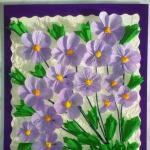Soviet interiors in parents' and grandmothers' apartments are very tired of anyone who grew up in them. At the same time, many objects of Soviet life are not only well preserved to this day, but also not without the special charm of childhood. The Village asked the director of the Moscow Design Museum and the head of the Finnish design bureau to explain why Soviet walls and radiograms are good and what heritage can be harmoniously fit into a modern kitchen, bedroom or living room.
Products manufactured in the Soviet Union were typical - just remember the famous film "The Irony of Fate", in which the hero cannot distinguish his apartment from someone else's. The trendsetter, the main center of design was the All-Union Research Institute of Technical Aesthetics (VNIITE), which developed design solutions not only for public spaces, but also for heavy industry, the machine-building complex. It included ten branches throughout the USSR and two large design centers.
The All-Russian Design and Technological Institute of Furniture developed standard projects for the furniture industry. In the 60s, they began to build “Khrushchevs”, a new fashion began - carved oak cabinets were taken out to the trash, old armchairs were thrown away. Those who understood the value of these items created stunning interiors for themselves in apartments and dachas, simply bringing things from the garbage dump or buying them for ridiculous pennies in thrift stores. In the 90s, a new wave of struggle against Soviet life came: walls, chests of drawers, sideboards, dressing tables began to be considered a “scoop” and were ruthlessly thrown away. At best, these things fell into the country. And now we live in an environment standard apartments Italian, Swedish design, mixed in different proportions with furniture made in Russia according to Western models.
The main quality of Soviet things is reliability and minimalism in the design approach, which was largely determined by the shortage. All things were made with the expectation that they would serve for more than a dozen years and would stand in small apartment. Therefore, their distinctive features- modularity and versatility. Probably everyone had folding tables, sofas, bunk beds and, of course, the walls, which were at the same time a bar, a dressing room, a sideboard and a bookcase. It was difficult to buy furniture and interior items - despite the huge circulation, demand far exceeded supply. There were small businesses that made furniture and interior items to order for the political leadership and the cultural elite - these things still remain worthy interior items.
In Europe, where traditions are strong in all spheres of life, it is customary to keep furniture, to pass on entire interiors by inheritance, realizing that this is part of history. Every new generation of tenants throws away old furniture in the trash and start life anew. Although furniture produced in the Soviet years can coexist with modern things. So you will be surrounded by things related to the history of your family.
Alexi Heiskanen
founder of design bureau A&A Design, Finland
I work in small company(we have an online store and a team of four people), we are engaged in the production of furniture and interior design. When designing a new space, we often use vintage furniture, which creates the necessary contrast in modern interior. In the houses of Finland, you can often find old and new side by side: old things are restored, changed, and this is partly due to their price. The team and I will analyze examples of typical furniture Soviet era, which is stored in the Moscow Design Museum, and we will suggest how it could be used in modern apartment or in industrial premises.
Sofa

Riga, Latvia
Massive sofa requires neighborhood with brick wall or facings of light stone. It is suitable for modern kitchen in which tiles are used warm tone. As you can see in the photo, the sofa has side shelves that can be used as a minibar. All other furniture is matched to the color of the textile used for upholstery.
Table
 Furniture set; 1950s Made by private order
Furniture set; 1950s Made by private order
Riga, Latvia
This is a table with a pronounced shape. If we imagine that the leg opening can be increased in length, then we get a resemblance to the standard design of the workshop. All attention is drawn to the square box - the whole interior will look at it, so there should be a minimum of items around this table. He does not agree with something strict, modern, he needs light design- white walls, perhaps it will be possible to put next to it bookshelf similar color. This is, of course, an option for the office.
Chair
 Furniture set; 1950s Made by private order
Furniture set; 1950s Made by private order
Riga, Latvia
Obviously, the chair is designed for the table we discussed above. But for me they are not compatible: a bulky table and next to it the same bulky chair. Just not this. Massive wooden table requires a stool with three legs, and a set of such chairs needs a massive, but stone or marble table. Or a solid wood kitchen table.
Radiola
 Radiola first class "Rigonda"; issue since 1965
Radiola first class "Rigonda"; issue since 1965
Riga Radio Plant named after A.S. Popova, Designer Adolf Irbite
This radiola will decorate any modern room, if it is surrounded by things from the same time. Alone, she will lose her color. In the interior of a bar or restaurant, this radiogram can live on its own, but in an apartment it needs to be supplemented by placing, for example, a picture or a poster next to it on the floor.
Dresser

This chest of drawers is a rather bulky thing. In a small Finnish apartment, I would most likely put it in the kitchen. To Helsinki a large room is a luxury, but big house I would put this chest of drawers in my bedroom. A lot of things will fit in the lower section, and instead of randomly standing objects, one picture should be placed on top.
Wall cabinet

This cabinet does not look like a component of a European interior; it is extremely difficult to put such an item in a small apartment. The exception is the case if you have a lot of space - you can allocate a living room for a closet, where there will be nothing else but a fluffy carpet, or place this closet in an elongated corridor that leads from room to room. However, it is important to monitor the size and not clutter up the space.
Decor
 Lampshades for lighting fixtures; early 1960s
Lampshades for lighting fixtures; early 1960s
From the collection of Azat Romanov A set of decanters and glasses; early 1960s
A set of decanters and glasses; early 1960s
Leningrad porcelain factory. From the collection of Azat Romanov
Since we are designing, not decorating, this is not exactly our professional area. However, suppose that the first service would be ideal for kitchen table, and the second - this is a real find - can become the center of the interior in the bedroom.
Watch
 Table clock "Slava"
Table clock "Slava"
Chelyabinsk watch factory Table clock "Lightning"; 1966
Table clock "Lightning"; 1966
Chelyabinsk watch factory Table clock "Lightning"; 1961
Table clock "Lightning"; 1961
Chelyabinsk watch factory
It is strange that there are people who get rid of such things! Such hours have a place next to the bed, on the desktop, they can be placed next to books.
Material preparation: Ludmila Cherednikova
The material was prepared in cooperation with the Moscow Design Museum.
Photos courtesy of the Moscow Design Museum.
The most important thing in interior design to consider one thing is very important rule- color balance! This ratio is 60% main color, 30% secondary and 10% accent. The main or secondary color should be neutral, and for accents it is better to choose bright and juicy tones. Accents should not be too much.
Method 2. Select sofas and armchairs in a single color scheme

The upholstery of the sofa, armchair and curtains can be made in one color. This uniformity will give the room a finished look. If the upholstery is not plain, but, for example, in small light flower, then in such an interior it is better not to abuse small accessories.
Method 3. Combine different surface textures

The interior, both classic and modern, will never look boring if you use different surface textures and an abundance of textiles. A textbook example is the combination of a voluminous sofa made of genuine leather, a high pile carpet and silk curtains.
Method 4. Paint the walls in bright colors

Sofa "Atlanta"
Light upholstery require more bright shade for walls or decorating with contrasting posters. Suitable pistachio, terracotta, purple shades. Such an interior will be the embodiment of sophistication and some understatement ...
Method 5. Pick up curtains to match
It would be a good move to add color shade sofa upholstery for curtains or blankets. For example, if the sofa is in pale blue, then the curtains and blankets can be indigo. To balance this brightness, it is better to choose walls that are neutral, but not white, but, for example, gray concrete.
Method 6. Add textile accessories to the interior
It is extremely necessary to complement the image of the interior with light upholstered furniture bright strokes. It may be resolved in color scheme that complements the interior - the color of the walls, carpets or curtains.
Method 7. Arrange color accents
Sofa "San Marino"
An elegant and cozy light sofa will be an ideal basis for color accents - decorative pillows and plaids.
Method 8. Choose the right chairs and poufs

Armchair "Sirius"
Method 9. Complete the interior with Art Deco accessories

Light sofa appropriate and popular for lovers of eclecticism. For example, pillows in expensive plain velor are appropriate here.
Method 10. Install a long narrow console behind the sofa
A long narrow console behind the sofa can serve as a good decorating solution; American designers are very fond of this technique.
The editors would like to thank the Tsvet Divans company for their help in preparing the material.
Perfect order, harmony of color and form and nothing superfluous… alas, glossy magazine pictures are far from reality. After all, sooner or later, any apartment "acquires" things, the functionality of which is inversely proportional to aesthetics. And what to do with these necessary, but ugly items? They need to be properly hidden! Let's see how cunning designers do it?
Go to the root!
Or rather, in the spine: old book covers can be used to disguise small technical devices. Someone will call it vandalism, but in all honesty, in any home library there are a couple of strange literary opuses that deserve to be processed into something, really noteworthy. So why not give them a chance to serve society in a new capacity? You take out the contents, leave the shell and hide inside, for example, a wi-fi router. Now it can be placed in a convenient place in front of everyone, and no one will guess that a book forgotten by someone is a snag.
What's in the boxes?
If the idea of transforming the printed word is not close to you, use alternative way. It is similar in essence, but this case the organization of a cache for equipment will not be associated with damage to property. Although some manipulations with old shoe boxes still have to be done. You will have to work on them. appearance: decorate with paper or cloth and make holes for the wires in one of the sides. However, if you do not want to mess around, you can buy ready-made options in stores where there are departments a la "Storage and order." At the exit, you should have designer boxes in your hands that can be placed on a table or bedside table, hiding inside everything that should not be seen by others. And let it buzz there, blink or distribute the Internet ... quietly and imperceptibly!

Hiding in plain sight
The scourge of any apartment is wires. They are everywhere, they multiply and take over your cozy world. Even if you took care in advance to mount everything that was possible into the wall and prudently installed skirting boards with cable channels, there is no salvation. Exit? Turn negatives into positives! How about, for example, to equip your own power line ... on your desktop? All you have to do is buy a couple of designer wire stands designed by Daniel Ballu. The American specializes in the development unusual items life, almost every realized idea becomes a bestseller. Imagine: a table, a laptop, headphones and wires-wires-wires… only they don’t lie on the table, but hang on miniature chrome supports. It's a completely different matter, don't you agree? Now everyone sees not primitive cords, but an original art object.

Do not want voluminous structures? There are excellent "flat" solutions. Wake up the artist dormant in you, let him draw pictures ... again from wires. Walls decorated in this way will become a feature of your interior. Silhouettes of houses, industrial landscapes or variations on the theme of "stucco". The complexity of the possible composition depends only on your artistic skills and the length of the source material. If desired, you can "paint" all available surfaces.

However, if all of the above is not enough for you and you still want to hide the cords out of sight - build a fence! Small, white ... along the plinth. The idea to disguise the cables in this way came to the mind of the British designer Carl Zahn. Easy to do - looks great. Try it!

Where, for example, to hide the printer? Designers suggest placing it in a modified chest of drawers.
Drawers and doors
Well, what to do with bulky things? Where, for example, to hide the printer? Designers suggest placing it in a modified chest of drawers. You just need to "work" a little on the front panel so that it reclines. A minimum of effort and convenience during storage and operation are guaranteed.

Drawers are, by the way, generally a salvation in solving issues related to hiding unwanted things. Organize a gadget charging station in one of them. Mount the splitter inside: open, connect, close. Everything is hidden, securely fixed and inaccessible to the uninitiated.

And how many problems pet owners can solve with their help! dog bowls, cat litter, sun loungers - all this can be hidden out of sight. And you don’t need to suffer anymore and think: “How to bring at least a little aesthetics into this disgrace?” Pushed, closed, forgot!

So take these and other ways of disguising "objectionable" things into service, and your house will be dominated by perfect order. Or, at least, its visibility)).
When decorating an interior with flowers, it is important to take into account not only the pattern and texture of wallpaper, tiles, the color of walls and curtains, but also the color of flower pots, appearance plants, try with indoor flowers emphasize the overall style and purpose of the room ...
Flowers in pots names and photos...
The nature and size of the plants are very diverse - from desktop miniatures to winter garden, therefore, each type of interior has its own models of compositions.
In spacious living rooms and halls will be appropriate floor vases with large or tree plants like dracaena or Bengal ficus.
For a high-tech interior or industrial design, choose flowers with "architectural" forms - nolina, yucca, jatropha. If there is enough space, lighting allows, you can set up a small garden, plant a luxurious tree.
AT classic interior ficus, pelargonium, azaleas, hibiscus will fit perfectly. Exquisite furniture, for example, bromeliads will decorate from bamboo. Against a background of light office furniture ivy, cissus, tradescantia look great, and variegated epipremnums, striped chlorophytums go well with dark.
In the bedroom, avoid plants whose flowers have a strong scent. For example, you should not decorate a room with geraniums. In the nursery, do not put flowers with juicy, easily breaking off shoots, thorns, poisonous parts, fruits. The ideal solution will become hanging pots.
Houseplants for the kitchen in pots will complement the interior. In the kitchen, place cissus, whose leaves look like grapes, asparagus, which looks like dill, fragrant laurel, or a coffee tree. The kitchen is no place for poisonous plants.
With a shortage of space, where the architectural layout can allow, a suspended vertical version landscaping without taking up floor space.
"Flower chandeliers" are suspended from the ceiling, the containers of which are either mounted on interior partitions and window openings, or installed in niches and arches.
More green when creating compositions to get a decorative effect
Light, what else should you pay attention to when placing house plants - site ...

Another one important detail- the color of the flowerpot, the appearance of the plant.
- Terracotta, beige, pale green colors of flowerpots or flowerpots will suit any interior.
- Bright - light green, red and blue - require the presence of the same color in other elements of the room's design.
- Ehmeya with bright pink inflorescences looks great in a pink flower girl.
- The striped leaves of the echmea harmonize well with the striped pots.
- Majestic nephrolepis is best placed in a strict terracotta or beige planter.
- The mischievous saxifrage looks great in a red round pot.
- Sansevieria with sharp, upward-looking leaves can be placed in a round planter. A flowerpot will soften the impression of leaves that seem aggressive.
- Or vice versa: emphasize their aggression by placing a sansevieria flower in a rectangular pot with clear corners.
- Plants with different textures will look great next to each other - dieffenbachia with calm smooth leaves and asparagus with "uneven" needles.




